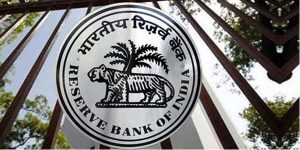 The Reserve Bank of India (RBI) has launched a mobile app “Mobile Aided Note Identifier (MANI)”. The visually challenged people can identify the denomination of a currency note by using the mobile app “MANI”. The application also works offline once installed. The application scans the currency notes using the camera of the mobile phone and also gives audio output in Hindi and English. The app does not authenticate a note as either genuine or counterfeit. The Reserve Bank of India (RBI) has launched a mobile app “Mobile Aided Note Identifier (MANI)”. The visually challenged people can identify the denomination of a currency note by using the mobile app “MANI”. The application also works offline once installed. The application scans the currency notes using the camera of the mobile phone and also gives audio output in Hindi and English. The app does not authenticate a note as either genuine or counterfeit. |
| Source: The Live Mint |
 The Appointments Committee of the Cabinet has approved the re-employment of V K Yadav as the Chairman of Railway Board. The appointment has been done for a period of one year. He took over as Railway Board Chairman from Ashwani Lohani on January 1, 2019. He has also held the post of General Manager of South Central Railway (SCR). He is an electrical engineer and belongs to the 1980 batch of the Indian Railway Service of Electrical Engineers. The Appointments Committee of the Cabinet has approved the re-employment of V K Yadav as the Chairman of Railway Board. The appointment has been done for a period of one year. He took over as Railway Board Chairman from Ashwani Lohani on January 1, 2019. He has also held the post of General Manager of South Central Railway (SCR). He is an electrical engineer and belongs to the 1980 batch of the Indian Railway Service of Electrical Engineers. |
| Source: The Live Mint |
 The Nationalist Democratic Progressive Party (NDPP) leader and Nagaland Assembly Speaker Vikho-o Yhoshu passed away. Yhoshu was elected to the state Assembly thrice from Southern Angami-1 constituency in Kohima district. He had won the seat as a candidate of the Naga People’s Front (NPF) in 2008 and 2013 and served as Advisor and Parliamentary Secretary of various departments. He was elected as Speaker of the state Assembly in 2018 assembly election. The Nationalist Democratic Progressive Party (NDPP) leader and Nagaland Assembly Speaker Vikho-o Yhoshu passed away. Yhoshu was elected to the state Assembly thrice from Southern Angami-1 constituency in Kohima district. He had won the seat as a candidate of the Naga People’s Front (NPF) in 2008 and 2013 and served as Advisor and Parliamentary Secretary of various departments. He was elected as Speaker of the state Assembly in 2018 assembly election. |
| Source: The News On AIR |
 The Union Ministry of Housing and Urban Affairs (MoHUA) has announced the results of the 1st and 2nd quarters of the Swachh Survekshan 2020. Indore has topped the cleanliness charts for two consecutive quarters among cities with over 10 lakh population while Kolkata was the worst performer. Jamshedpur has topped the cleanliness charts for two consecutive quarters among cities with 1 lakh to 10 lakh population. The rankings were conducted in a league format for the first time and were split into three quarters (April to June, July to September and October to December 2019) and different categories based on the population of the city. The rankings were based on collection, transportation, processing and disposal of waste. The Union Ministry of Housing and Urban Affairs (MoHUA) has announced the results of the 1st and 2nd quarters of the Swachh Survekshan 2020. Indore has topped the cleanliness charts for two consecutive quarters among cities with over 10 lakh population while Kolkata was the worst performer. Jamshedpur has topped the cleanliness charts for two consecutive quarters among cities with 1 lakh to 10 lakh population. The rankings were conducted in a league format for the first time and were split into three quarters (April to June, July to September and October to December 2019) and different categories based on the population of the city. The rankings were based on collection, transportation, processing and disposal of waste. |
| Some key results of the Swachh Survekshan 2020: |
|
Top three cities with over 10 lakh population in 1st quarter (April to June):
|
|
Top three cities with over 10 lakh population in 2nd quarter (July to September):
|
|
Top three cities with 1 lakh to 10 lakh population in 1st quarter (April to June):
|
|
Top three cities with 1 lakh to 10 lakh population in 2nd quarter (July to September):
|
|
Among the Cantonment Boards, the rankings in 1st quarter (April to June) were as follows:
|
|
Among the Cantonment Boards, the rankings in 2nd quarter (July to September) were as follows:
|
| Secunderabad Cantonment Board in Hyderabad is the worst performer among other cantonment boards. |
| Source: The Hindu |
 On January 1, 2020, the Government Think Tank released its Draft “Model Concession Agreement for Setting Up Medical Colleges under Public Private Partnership” guideline document. Under the guideline the think tank has suggested Public Private Partnership (PPP) model to link private medical colleges and district hospitals. On January 1, 2020, the Government Think Tank released its Draft “Model Concession Agreement for Setting Up Medical Colleges under Public Private Partnership” guideline document. Under the guideline the think tank has suggested Public Private Partnership (PPP) model to link private medical colleges and district hospitals. |
|
|
|
 Government of India misses its disinvestment target as the plan to sell Bharat Petroleum Corporation Limited (BPCL), Air India and Container Corporation of India has not been succeeded. Government of India misses its disinvestment target as the plan to sell Bharat Petroleum Corporation Limited (BPCL), Air India and Container Corporation of India has not been succeeded. |
|
|
 The prices of Darjeeling Tea that recently received GI tag has fell by 20% to 25% due to unchecked flow of Nepal Tea into the country. The prices of Darjeeling Tea that recently received GI tag has fell by 20% to 25% due to unchecked flow of Nepal Tea into the country. |
|
|
|
 The Andhra Pradesh Government announced that it will deliver sand at customers’ door steps. As a pilot project, the government is to begin the initiative on experimental basis. The Andhra Pradesh Government announced that it will deliver sand at customers’ door steps. As a pilot project, the government is to begin the initiative on experimental basis. |
|
|
|
You need to login to perform this action.
You will be redirected in
3 sec
